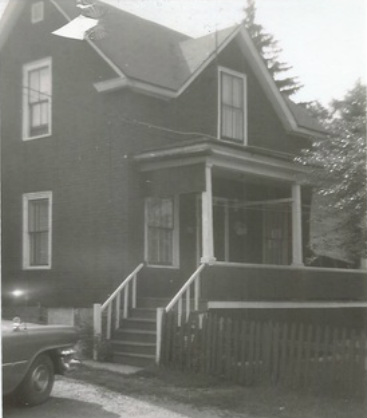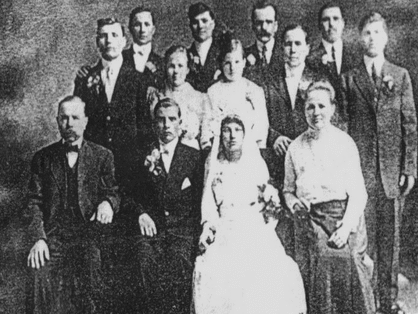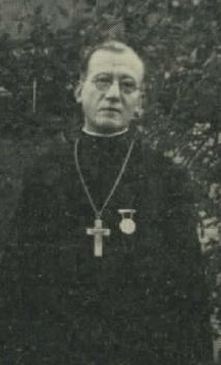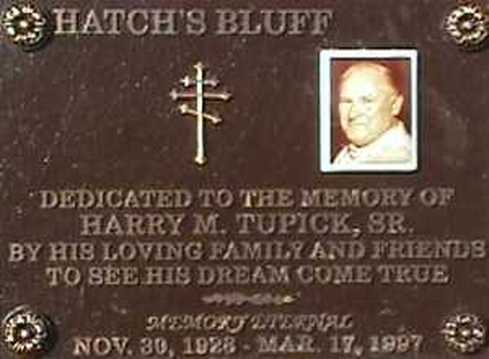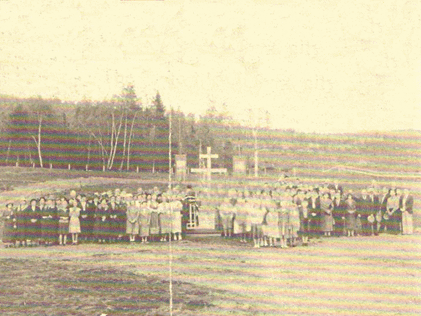Russian Hill
According to the United States Census of 1900, there were around 48 Russian men, woman, and children living in ward one in Berlin. The vocations of most of these early Russians were marked simply as “junk dealers”. One of these “junk dealers” was William Addelson, who made a great deal of money from selling his “old junk.” Some other Russians in 1900 include, William W. Freedman and his wife, Hannah, and Louis “Emile” Nathanson, who was a shoemaker. Most of these Russians lived on Mechanic, Exchange, Union, and Green Streets here in Berlin.
The Russians that came to Berlin were mostly from the Providences of Minsk, Volyn, and Grodno. Minsk and Grodno are in modern-day Belarus and Vilnius, on the other hand, is in modern-day Lithuania. It is often thought that Vilnius and Grodno are a place called Wolensk and Gordensk but this is due to mispronunciation of their Russian names, Volynski and Grodnenski. There were also many families that came from other parts of the Russian Empire, and later, the Soviet Union.
One of the men that came from what is now called Ukraine was Mike Mazurik. Mr. Mazurik came here in the early 1900’s and stayed for some time. After a visit to Ukraine, Mike was not allowed reentry back in to the United States because the Immigration laws had changed. Mr. Mazurik was forced to go somewhere else. He eventually became a Canadian immigrant and lived in Ontario until his death.
Another Russian immigrant that came to Berlin was Mike Tupick. Mr. Tupick’s father, John, was a farmer in Minsk, which was then part of the Russian Empire (now the capital of Belarus), and young Michael often had to watch after his families sheep. When he came to Ellis Island in 1913, Michael went through the normal immigration tests that other immigrants had to endower in those days. Unlike other Russian immigrants of that time, Mr. Tupick knew how to read and write in Russian which is uncommon for peasants and farmers that lived in the Russian Empire period of time. He came to Berlin to join a friend of his. In Berlin, Michael started off by working in the mill but later owned his own lumber business. Michael died in the late 1970’s. Although we only mention two of Berlin’s Russian immigrants, there were many more. The highest number of immigrants from different parts of the Russian Empire was over 500 men, woman, and children.
The Russians that came to Berlin were mostly from the Providences of Minsk, Volyn, and Grodno. Minsk and Grodno are in modern-day Belarus and Vilnius, on the other hand, is in modern-day Lithuania. It is often thought that Vilnius and Grodno are a place called Wolensk and Gordensk but this is due to mispronunciation of their Russian names, Volynski and Grodnenski. There were also many families that came from other parts of the Russian Empire, and later, the Soviet Union.
One of the men that came from what is now called Ukraine was Mike Mazurik. Mr. Mazurik came here in the early 1900’s and stayed for some time. After a visit to Ukraine, Mike was not allowed reentry back in to the United States because the Immigration laws had changed. Mr. Mazurik was forced to go somewhere else. He eventually became a Canadian immigrant and lived in Ontario until his death.
Another Russian immigrant that came to Berlin was Mike Tupick. Mr. Tupick’s father, John, was a farmer in Minsk, which was then part of the Russian Empire (now the capital of Belarus), and young Michael often had to watch after his families sheep. When he came to Ellis Island in 1913, Michael went through the normal immigration tests that other immigrants had to endower in those days. Unlike other Russian immigrants of that time, Mr. Tupick knew how to read and write in Russian which is uncommon for peasants and farmers that lived in the Russian Empire period of time. He came to Berlin to join a friend of his. In Berlin, Michael started off by working in the mill but later owned his own lumber business. Michael died in the late 1970’s. Although we only mention two of Berlin’s Russian immigrants, there were many more. The highest number of immigrants from different parts of the Russian Empire was over 500 men, woman, and children.
The Closeness of Russian Families
The closeness of Russian families can be seen just by looking at the two photos below. Both photos are form an article in the Coos Magazine in November of 1991. The photo on the left is the wedding party of Constantine Darchik and Helen Panish (taken in 1917). The photo on the right is the wedding party of Michael Tupick and Eugenia Tarasevich (taken in 1918). Eugenia can also be seen as a flower girl in the photo on the left in back of Mrs. Darchik. The thing that makes these families close is that the two families’ children, Olga Tupick and Nicholas Darchik got married in 1945. Both the Darchik and the Tupick families are very well known Russian families in Berlin. Both families have made their mark on Berlin’s history along with many other Russian families.
Holy Resurrection Orthodox Church

An early photo of the Russian Church (Image from Poof Tardiff)
Reverend M. Affendeick came to Berlin to establish a Russian Orthodox organization. Mr. Affendeick left Berlin unsuccessful at creating this organization. Sometime after Rev. M. Affendeick left Berlin, Rev. Arcady Piotrowsky came to Berlin from Cleveland, Ohio with the same goal in mind, this time it was successful. In 1915, a meeting was held in the basement of the old St. Barnabas Episcopal Church. The meeting consisted of 139 Russians. They all agreed to have a regular priest, church, and school. A committee was also chosen at that meeting to lead these three wishes. Some of the names of the men in the first committee are, Chairman Jacob Connonochuk, Treasurer Roman Masloff, Secretary Leon Leonovich, and Elders: William Zolnercyk, John Egnatovich, William Kolinsky, Joseph Litvin, Constantine Snigger, and Zachary Migtz. At first they held services at the old St. Barnabas Church and later at an old fire department garage. On May 1, 1915, the construction of the Church started on top of a little hill now called Hatch's Bluff. With the help of O.B. Brown, R. B. Wolf, and W.R. Brown, the church was completed five months after it was started. On a Sunday morning, October 10, 1915 the church was dedicated under the name, Holy Resurrection Russian Orthodox Greek Catholic Church. The first act of ceremonies was the grand mass, personally celebrated by the Most Reverend Eudokin, Archbishop of the Russian Greek Orthodox Catholic Church of North America. The Reverend Piotrowsky did not stay long after establishing himself with this church. He went off to the World War, served as a chaplain with the United States Navy, the Canadian Army, and served in other fields after the war. It wasn’t until 1928 that the reverend returned to Berlin. In the mid 1930’s, the church went through many priests and was also in financial ruin. At that time there were just twenty-five families left in the parish. The members were discouraged because of the large amount of interest that was unpaid on the mortgage. With the efforts of Rev. Morozoff and the Berlin National bank though, the problem was solved, and by 1940, the church was rededicated. In 1963, the problems came again and the church was closed. The church sat empty for eleven years. In 1974, when Eugenia (Tarasevich) Tupick died, Her family asked Father Tutko and Father Westberg to come to Berlin and do her funereal services. Before they could do the services for Mrs. Tupick, There were many duties that needed to be done. The domes of the church needed to be polished and repainted, paintings in the church needed to be redone, and many other duties were also done. The church was reopened and is still in use to this day. In recent history of the Holy Resurrection Orthodox Church, also known as the Russian Church, Father Sergious Gerken returned as the full-time priest and started to have yard and bake sales. Fr. John Pawelchak, who also serves at Christ the Savior Orthodox Church in Bangor, replaced Gerken in 2014, who moved to Florida to serve a parish there.
Style
The design for the Russian Church was typical of the time (1915). Designed by John Bergesen, an architect from New York City, the church has six onion shaped domes and six crosses. The church is very special because it is one of the last Russian Orthodox churches whose charter was granted by
Tsar Nicholas II before the fall of the Russian Empire.
|
|

This photo, which was taken in 1916, shows the Russian club Zaria, the Russian word for “dawn”. In ancient Slavic mythology, Zaria, the goddess of beauty, was associated with the morning because the ancient Slavs believed that dawn was the “brightest, purest, and most honorable” part of the day. The club was named “Zaria” because they felt that the construction of their new church was their beginning of a new life in America, just as dawn is the beginning of a new day. The other sign reads “(Unidentified) --- Ready to Show Our Loyally.” (Image from a church booklet)

